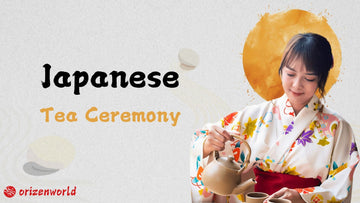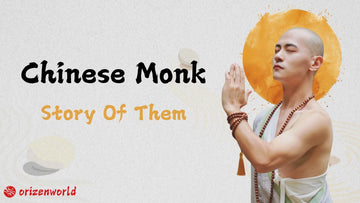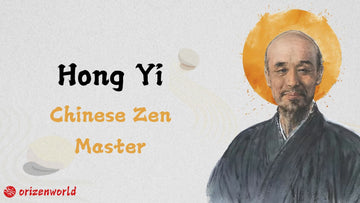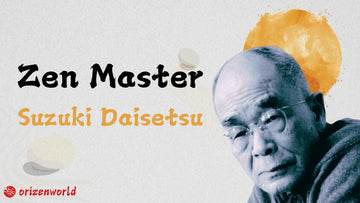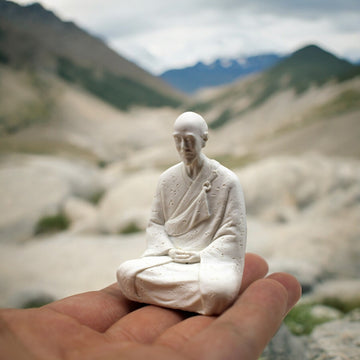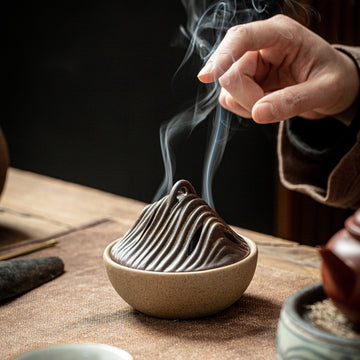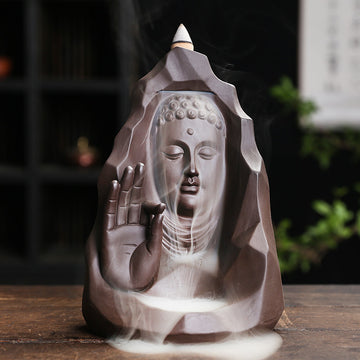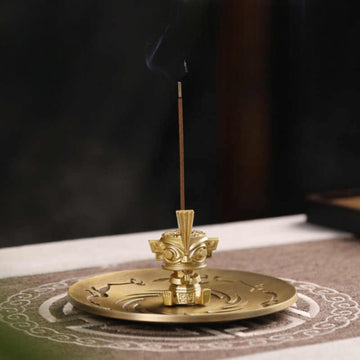If you've explored Japanese culture or are a fan of the Japanese lifestyle, you’ll notice that tea plays a central role in daily life. From enjoying cha donburi (tea over rice) to sipping mugicha (barley tea), it’s clear that tea is woven into the fabric of Japanese culture. It's hard to imagine Japan without tea, as it’s a significant part of the food and social rituals.
But what makes Japan such a tea-centric country? In today’s article, I want to share the fascinating story of Japanese tea culture, from its origins to its influence on daily life and traditions. Join me as we explore the rich history and deep connection the Japanese people have with tea!
The Japanese tea ceremony, or chanoyu, has its origins in China, an undeniable historical fact. Tea culture was introduced to Japan during the Nara period, around the 8th century. Initially, tea was used as a medicinal herb and part of religious rituals. Over time, it evolved into a cultural activity among the Japanese nobility. The earliest known tea seeds were brought back to Japan by the Buddhist monk Saichō, who studied in China. In 805, Saichō introduced tea seeds to Kyoto’s Hie Shrine, where they were cultivated. Additionally, records in the Nihon Kōki describe Emperor Saga offering tea in 815, marking the beginning of tea culture in the Japanese court.
Tea’s role in Japanese society evolved through various periods. During the Heian period (794-1185), tea was mostly enjoyed by the aristocracy. In the Kamakura and Muromachi periods, tea gained popularity among Zen monks, who valued its calming and meditative qualities. The development of tea culture paralleled Japan’s spiritual and social changes, becoming an integral part of Japanese life.

Japanese monks believe tea promotes mindfulness and aligns with Buddhist principles, fostering spiritual growth and enhancing their meditation practice.
A pivotal figure in the history of the Japanese tea ceremony was Sen no Rikyū, a tea master during the 16th century. Rikyū is credited with refining the tea ceremony, focusing on the principles of wabi-sabi (beauty in imperfection) and wa-kei-sei-jaku (harmony, respect, purity, and tranquility). His philosophy and teachings shaped the way tea was prepared and served, influencing the spiritual and aesthetic aspects of the ceremony.
Sen no Rikyū's contributions solidified the tea ceremony as a cultural pillar in Japan. His impact extended beyond the ceremony itself, leaving a lasting legacy on Japanese aesthetics and Zen Buddhism. Through his teachings, tea became a symbol of Japanese humility, simplicity, and mindfulness.
The philosophy behind the Japanese tea ceremony is deeply rooted in Zen Buddhism, which emphasizes mindfulness, simplicity, and a focus on the present moment.
In tea practice, the process of preparing and drinking tea becomes a form of meditation and self-reflection. The four principles of the tea ceremony—harmony (和), respect (敬), purity (清), and tranquility (寂)—are directly inspired by Zen teachings. These principles guide not only the act of making tea but also how one should approach life itself.

Japanese tea ceremony fosters peace, mindfulness, and self-reflection, helping practitioners comprehend life’s impermanence through meditative rituals and simplicity.
One key concept in Japanese tea culture is wabi-sabi, the appreciation of beauty in imperfection. This philosophy encourages valuing simplicity and the transient nature of life, which is reflected in the modest, yet profound, aesthetic of tea utensils and settings. Another central idea is ichi-go ichi-e, meaning "one time, one meeting," coined by tea master Sen no Rikyū. This idea emphasizes that each tea gathering is unique and should be cherished, resonating with the Zen understanding of impermanence.
The ritualistic aspects of the tea ceremony are designed to foster tranquility and mindfulness. Each movement, from the selection of tea utensils to the precise way tea is brewed, demands focus and intention. This attention to detail is a reflection of Zen's emphasis on being fully present in the moment and finding peace in simplicity and routine. Through the tea ceremony, practitioners connect deeply with themselves and their surroundings, achieving a heightened sense of mindfulness.
In the Japanese tea ceremony, the essential tools and equipment are carefully chosen to enhance the ritual’s serenity and mindfulness. The primary utensil is the chawan (tea bowl), typically made from ceramic, which holds the powdered matcha. The chasen (whisk) is used to mix the tea with water, ensuring a smooth, frothy consistency. The chashaku (scoop) is used to measure the appropriate amount of matcha powder, allowing for precise tea preparation. These tools reflect the meticulousness and attention to detail inherent in the practice.
The chashitsu (tea room) is a central aspect of the ceremony, offering an environment of tranquility and focused energy. The design of the tea room plays a vital role in promoting mindfulness, with simplicity, natural elements, and minimal decoration that allows for undistracted reflection. The space should evoke harmony, balance, and a connection to nature, enhancing the experience of the ceremony.
Japanese tea culture often intersects with incense culture as well. The use of incense holders to burn incense during the ceremony adds another layer of sensory experience, contributing to a peaceful atmosphere. The fragrance of incense complements the taste and visual beauty of the tea, further calming the mind and enriching the ceremony.
Each tool and element in the Japanese tea ceremony is chosen with careful intention, ensuring that every action, from brewing to sipping, is a deeply mindful experience.
The Japanese tea ceremony is a ritual of immense cultural significance, with each step carried out with reverence and precision. When the ceremony begins, the host first kneels at the entrance of the tea room, waiting to greet the guests.
The first guest, known as the shokyaku (primary guest), enters the tea room first, followed by the other guests. Once inside, all participants bow to each other in respect. The guests are seated facing one another, with the primary guest occupying the place of honor on the left. At this point, the host retrieves the necessary tools from the adjacent room, known as the mizushitsu, while the guests enjoy the room’s decoration and the flowers displayed.
After preparing the necessary tea utensils, the host begins the process of heating the water on a furo (heating stove) and lighting incense from the kōbako (incense box). While the water is heating, the guests have time to admire the surroundings or take a brief walk in the garden. Once the water has reached the right temperature, the ceremony can officially begin, and the guests re-enter the tea room.
Before serving the tea, the host typically offers a sweet treat to the guests to ensure they are not drinking tea on an empty stomach. The host then uses both hands to hold the tea bowl and brings it to the primary guest. After the guest has tasted the tea, the cup is passed around to the other participants in order.

In the Japanese tea ceremony, participants follow strict rules to maintain formality, respect, and practice mindfulness throughout the ritual.
When drinking the tea, guests may either take turns sipping from the same bowl or have individual servings. Once the tea has been consumed, the bowl is returned to the host, who may exit the room briefly to prepare the next round of tea or allow the guests to converse freely. However, it is important to note that topics such as politics or business are strictly avoided in the tea ceremony, with the focus being on nature and mindfulness.
The actions of both the host and the guests are of great importance. The host’s gestures, from preparing the tea to presenting it with respect, demonstrate care and humility. In turn, the guests must show their gratitude through mindful actions, like bowing and handling the tea bowl carefully. The entire ceremony reflects mutual respect and harmony between all participants.
In the Japanese tea ceremony, Matcha, powdered green tea, holds a central role. This vibrant green tea is finely ground into a powder and whisked with hot water, creating a frothy and rich beverage. Matcha is traditionally used in the Chanoyu or Sado tea ceremony, where it is meticulously prepared and served to guests. The preparation of matcha emphasizes mindfulness, as every whisk and movement is performed with careful attention.

Matcha is the most commonly used tea in Japanese tea ceremonies, symbolizing mindfulness, precision, and the beauty of tradition.
In addition to matcha, Sencha, a type of green tea made from whole tea leaves, is also used in various tea ceremonies, particularly in more casual settings. Sencha is typically steeped in hot water, allowing its delicate flavors to infuse, and is often served to guests during less formal occasions. While it may not carry the same ritualistic weight as matcha, sencha is still an important part of Japanese tea culture.
Other teas like Gyokuro (high-quality green tea) and Hojicha (roasted green tea) are also used in certain settings. Gyokuro is prized for its sweet and umami-rich taste, while hojicha's roasted flavor offers a more mellow and warm tea experience.
The variety of teas used in Japanese ceremonies highlights the diverse ways in which tea is enjoyed and appreciated, from the formal to the casual.

Sen no Rikyū is a name that carries immense significance in Japanese culture. As a tea master, philosopher, and close advisor to the powerful warlord Toyotomi Hideyoshi, Rikyū's life and legacy remain surrounded by mystery.
While his contributions to the Japanese tea ceremony are well-documented, the reasons behind his tragic death—ordered by Hideyoshi—are still unclear. Historians have struggled to explain the exact cause of his demise, with some pointing to tensions between Rikyū and the warlord, but no definitive records exist.
Rikyū is credited with refining the Japanese tea ceremony and shaping it into the revered practice it is today. He emphasized the principles of "wabi-sabi"—beauty found in simplicity, imperfection, and transience. This philosophy sought harmony, naturalness, and a deep connection between people. Rikyū's influence extended far beyond aesthetics; his approach transformed the tea ceremony into a profound cultural and spiritual experience, transcending mere social ritual.
In addition to his role as a tea master, Rikyū was deeply involved in the politics of his time, using his position to advise Hideyoshi. However, his prominence also led to his tragic downfall. Despite his contributions to Japanese culture, Rikyū's life ended abruptly, and his relationship with Hideyoshi remains a subject of intrigue.
Rikyū's legacy lives on through the "Senke" schools of tea ceremony, which continue to practice the tea rituals he established. His teachings on tea utensils, the importance of aged objects, and the reverence for imperfection are still central to the practice today. In this way, Sen no Rikyū’s influence on Japanese tea culture endures, embodying a unique blend of aesthetic sophistication and Zen philosophy.
The Japanese tea ceremony offers significant health benefits, particularly when compared to drinking coffee or alcohol. While coffee often provides a temporary energy boost and alcohol can lead to negative side effects, the tea ceremony focuses on promoting calmness and balance.
The slow, intentional process of preparing and consuming tea helps to soothe the mind and body, offering a restorative experience that encourages relaxation without the overstimulation that coffee or alcohol might cause.
One of the key benefits of practicing the tea ceremony is the cultivation of mindfulness and concentration. Every aspect of the ritual, from the careful selection of utensils to the precise movements during the ceremony, requires the practitioner to be fully present.
This meditative practice encourages mental focus and clarity, allowing participants to quiet their minds, reduce stress, and experience a sense of inner peace. Over time, this focused attention can also lead to greater wisdom and a deeper understanding of oneself.
The tea ceremony is also a reflection of core Japanese values such as respect, harmony, and purity. The act of preparing and serving tea is done with great reverence, showing respect for both the tea and the person being served.
Harmony is emphasized through the balanced, thoughtful interaction between the host and guest, while purity is seen in the cleanliness of the utensils and the space itself. These values not only shape the ceremony’s practice but also extend to the personal growth of those who engage in it, fostering a sense of connection and balance in daily life.

